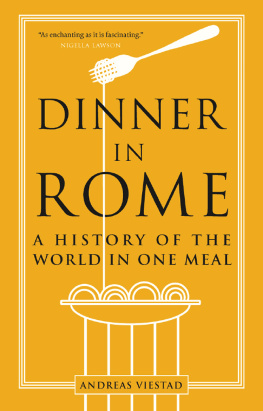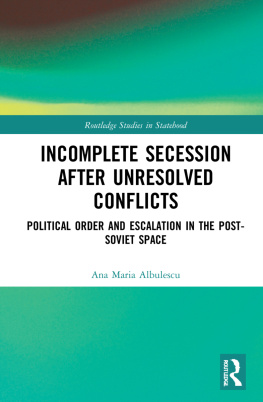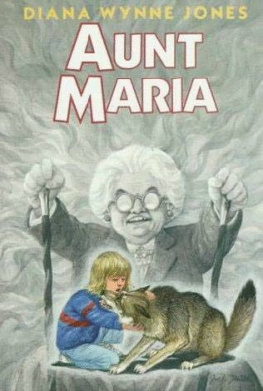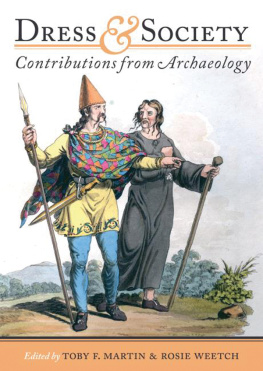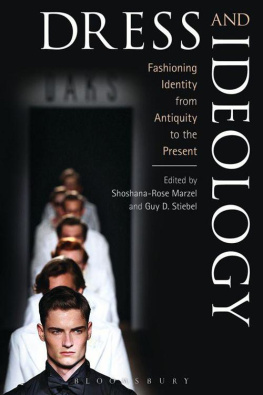Published in South Africa by:
Wits University Press
1 Jan Smuts Avenue
Johannesburg, 2001
www.witspress.co.za
Copyright Vibeke Maria Viestad 2018
Published edition Wits University Press 2018
Photographs Copyright holders 2018
Cover image: Decorated U-shaped bag SAMAE1545c, Iziko Social History Collection.
Photograph supplied by Iziko Museums of South Africa.
First published 2018
http://dx.doi.org.10.18772/12018081913
978-1-77614-191-3 (Print)
978-1-77614-192-0 (Web PDF)
978-1-77614-193-7 (EPUB)
All rights reserved. No part of this publication may be reproduced, stored in a retrieval system, or transmitted in any form or by any means, electronic, mechanical, photocopying, recording or otherwise, without the written permission of the publisher, except in accordance with the provisions of the Copyright Act, Act 98 of 1978.
All images remain the property of the copyright holders. The publishers gratefully acknowledge the publishers, institutions and individuals referenced in the captions for the use of images. Every effort has been made to locate the original copyright holders of the images reproduced here; please contact Wits University Press in case of any omissions or errors.
Project manager: Hazel Cuthbertson
Copy editor: Lee Smith
Proofreader: Alison Lockhart
Indexer: Marlene Burger
Design and layout: Fire and Lion
Typesetter: MPS
Typeset in 9 point Gotham Narrow
Acknowledgements
This book is based on work I started as a PhD Research Fellow in 2008. It has taken me ten years to have it published, not only because it is time consuming to document, analyse, ponder upon and present such complex material, but also because it takes time to live life. My work and life involve many people to whom I am very grateful for all the help and support I received, both through my doctoral studies and after, while rewriting the thesis into a book.
At my home institution, the Department of Archaeology, Conservation and History at the University of Oslo, I want to thank all my former colleagues for creating a fun, friendly and stimulating place to work as a PhD student. I thank my former supervisor, Christopher Prescott, and co-supervisor, Tore Stersdal, for their enthusiasm towards the project, helpful comments and necessary advice. I am grateful to Lotte Hedeager for encouraging the project in the first place and to Julie Lund for supporting my application. Tusen takk goes to my fellow PhD students who read and commented on parts of this work at several stages: Josephine Munch Rasmussen, Elise Naumann, Lene Os Johannesen, Astrid Johanne Nyland, Sigrid Staurseth and Lars Reinholten Aas. Special thanks go to Marianne Hem Eriksen, who also helped me with computer problems at a stressful time. Asgeir Nesen provided invaluable help by building the grid for my database and helping me use it throughout the empirical analyses. Thank you also to Gerd Eng Kielland for drawing the map.
I am very grateful to Alinah Segobye, Terje stigrd and Per Ditlef Fredriksen, who served as the committee for my defence, and who very kindly encouraged me to work the dissertation into a book. I appreciate their comments and advice. I would also like to thank the two anonymous peer reviewers whose comments and suggestions have made the book better.
In South Africa, I am grateful to a great many people for welcoming me into their institutions and homes and for doing everything they could to help me progress in my work. From my very first visits to the South African Museum in Cape Town I would like to thank Ren Rust for introducing me to Sarah Wurz, and Sarah for welcoming me, setting me up with a place to work and introducing me to in-house and visiting colleagues and scholars.
A very special thank you goes to Lindsay Hooper and Gerald Klinghardt in the Social History Collections Department, Iziko Museums of South Africa, for going to enormous effort so that I could see everything that I wanted to see and have all questions answered, even in a time of moving and relocation of the collections. I am also very grateful to Babalwa Ramncwana for assistance in the collections and to all the assistants that helped me on my various visits: Ntombovuyo (Ntombi) Tywakadi, Phatuxolo (Patrick) Rhoxo and Thando Ngcangisa. I am deeply grateful to Lailah Hisham, who patiently organised high-resolution images of archival material from the Dorothea Bleek collection, provided permissions and organised new photographs of the artefact material. Thank you also to photographer Nigel Pamplin.
At Museum Africa in Johannesburg, Diana Wall welcomed me with warmth and enthusiasm and helped me enormously in going through the collection and encouraging my work and questions. Many thanks go to Linda Chernis for helping me with the photograph collection, both while on site and later via the world wide web. In the final preparation of the book, Zola Mthsiza, Thabo Seshoka and Kenneth Hlungwane went to great effort to help me with high-res images and permissions and to organise new photographs of many of the Fourie artefacts. For this I am truly grateful. The help and friendliness I received from Ann Wanless, both during my research visits and in the years after, meant a lot to me. I would also like to thank Julia Charlton at the Wits Art Museum for letting me see the Standard Bank Collection at very short notice when I was there in 2011.
At the McGregor Museum in Kimberley, I thank David Morris for organising my visit and stay during my PhD research, and for helping me in the collections. I am very grateful to Tharina van Tonder for locating and photographing the artefacts I did not have the chance to see myself while I was visiting. I am also grateful to Sunet Swanepoel for permission to print a scan from the museums archival material and one of the photographs from the artefact collection.
At the University of Cape Town, I wish to express my gratitude to Carolyn Hamilton for welcoming me into the Archive and Public Culture Research Initiative, where I had the chance to present an early paper on my work on the Bleek material and receive valuable comments and feedback from fellow workshop participants. Thank you, Simon Hall, for friendly comments and very helpful literature advice for further progress.
I am in great debt to Carol Kaufmann, who opened her house to me and showed great interest in my work. I am very grateful to Jill Weintroub for sharing her transcription of Bleeks diary from Kakia with me. I would also like to thank Mark McGranaghan for sharing his work through email correspondence.
In the process of working the thesis into a book, Clive Kirkwood of the University of Cape Town Libraries Special Collections was of great help in providing high-res images and permissions to print material from the Bleek and Lloyd collection. I am also very grateful to Patricia Rademeyer for helping me get permission to print Barbara Tyrrells work, and to the Campbell Collections of the University of KwaZulu-Natal for granting the permission.
In the final write up and publication of this work, the financial support I received from the Faculty of Humanities at the University of Oslo was critical, as was the generous support and facilitation from Sren Handberg at the Department of Archaeology, Conservation and History. Thank you Isak Roaldkvam for helping me with my EndNote troubles, and thanks a million Astrid Tvete Kristoffersen for formatting and finalising the manuscript for publication. At Wits University Press, I would like to thank Roshan Cader for believing in this book and helping to make it all happen, Lee Smith for encouragement and much appreciated copy editing, and Hazel Cuthbertson for managing the project.




